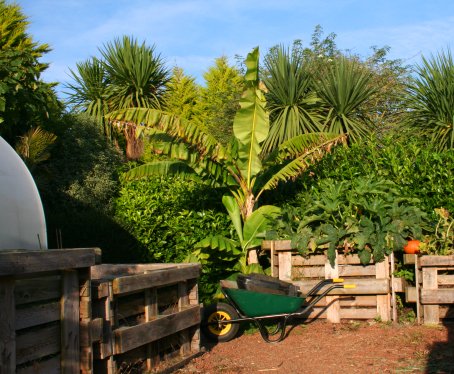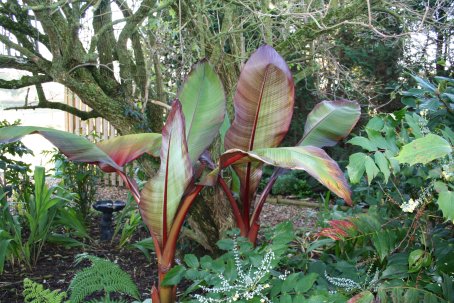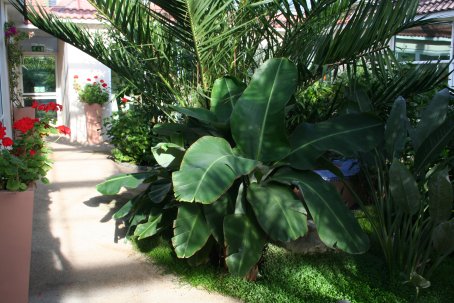09 August 2007
Decorfolia goes bananas
Have you ever fancied growing a banana plant in your garden and making a statement with it's impressive tropical foliage and architectural structure, but thought it too difficult or the British climate too harsh? Well, think again, as there are quite a few varieties that will thrive here and with only a nominal amount of effort and care by you...

Musa bajoo
The ornamental Banana is a herbaceous plant from the family Musaceae that includes Musa and Ensete, which are natives of Asia and Africa. Whilst often called banana 'trees' because of the large size some can grow to, (8 metres tall, with 3 metre long leaves), they actually grow more like a grass from suckers, with the stem or 'trunk' made up from densely packed leaves called a pseudostem. The suckers or rhizomes are by far the easiest route to take if growing your own, as seed propagation is time consuming and difficult, with germination taking up to 8 months at a constant high temperature...
OK so that's the technical bit over with, what you really want to know is which ones to grow and how to do it! So we will start with the toughest and probably the quickest growing, and the one most likely to be for sale in your local nursery...
Musa Basjoo (see picture above).
This pale-green leaved banana originates from Japan and can withstand temperatures as low as -8ºC without protection when well established. Careful wrapping up with fleece and protection of the roots with straw or a heavy mulch (or similar) can see even harsher winters endured. The secret is to protect the rhizomes from cold as a Basjoo can grow as much as 2 meters tall in one long summer (remember those?).
Choose your planting spot well - very sunny and sheltered from wind. These monsters will also need a lot of space as they can send up a lot of shoots in one season, all capable of growing to 3 metres or more with time. They also need a very fertile, well drained soil and lots of water. If the roots become waterlogged though they will rot and kill your Musa very quickly. When first planting your Musa make sure to add plenty of well rotted manure some sharp sand and a good organic fertilizer like 'fish blood and bone' and dig them in deep, very deep...
Ensete maurelli and Ensete tandarra
These are not as tough as the Basjoo mentioned above, only withstanding temperatures down to -1ºC but their deep red foliage make them worth the effort. Both these varieties are best planted as summer bedding making sure you give them plenty of space as they can grow up to 1.5 metres in one season. Like all Musaceae plant in full sun or partial shade and sheltered from leaf shredding winds.
Before the first frost of Winter takes hold cut off all the leaves, dig up the rhizomes and stand upside down for a few days to dry. Store in a cool dry frost free place until they start to shoot in the Spring and again plant out as a bedding plant. You will find after a few years that you can divide the rhizomes to increase your stock...

Ensete tandarra
Musa dwarf Cavendish
As the name implies these bananas do not grow very tall, about 1.8 metres after a few years growth and they can not tollerate temperatures much below 10ºC, but can withstand lower light levels which makes them ideal as a conservatory/house plant. Follow all the same planting rules as for other Musaceae and keep them warm. If possible move outside during the hotest part of Summer.

This image shows a Cavendish super dwarf in one of our contracts...
These are just a few of the the many varieties of banana available but they come tried and tested and are readily available from most good garden centres...